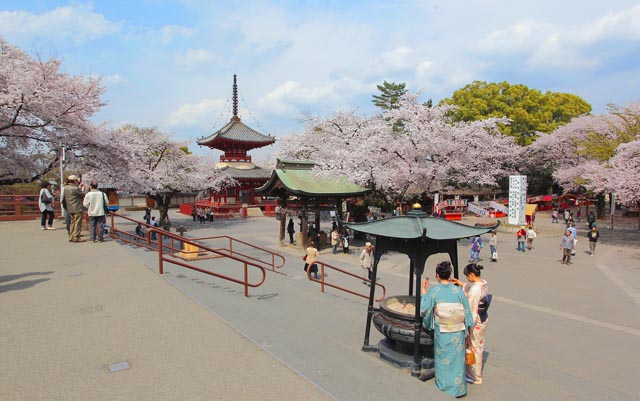Toki-No-Kane (The Bell of Time)
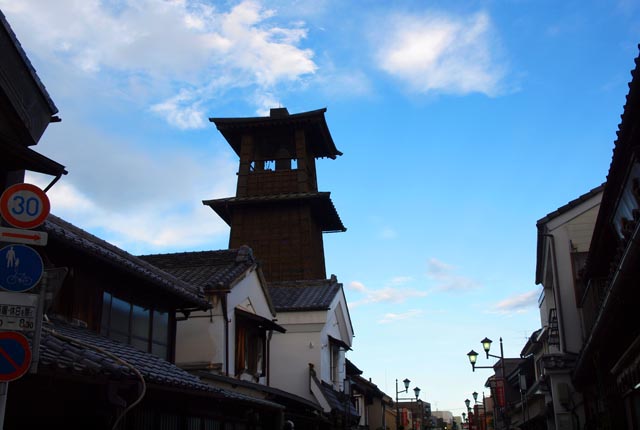
This is the landmark that towers over Kawagoe’s historical Kura-style buildings. A clock tower that has been in service since the Edo Period and beloved by the people of this castle town, it was built about 400 years ago. The belfry and bell have been burned down several times by conflagrations during the Edo Period, but have been rebuilt four times. The beautiful chime has been certified as one of “Japan’s 100 Scenic Sounds” for preservation. It is approximately 16 meters high.
Ichiban-gai (Main Street)
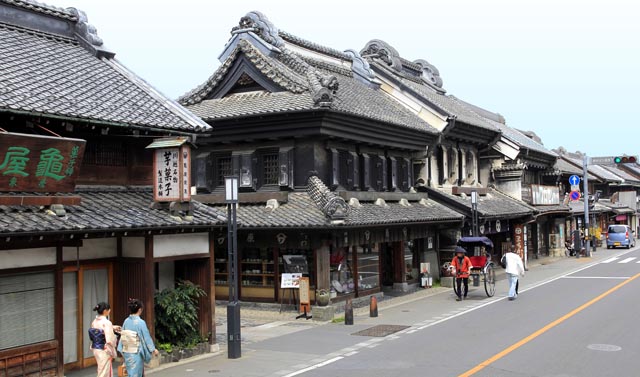
This is a historical district, featuring buildings with big “Onigawara” roof tiles, black plaster walls and thick gatefold doors. Walking the streets lined with the distinctive Kura-style buildings, you feel as if you had traveled back in time to the old days. Each building looks similar, but actually has its own unique style. Today, there still more than 30 of these stately buildings in the district. The home of the Osawa Family, built in 1792, is the oldest among them and is the only designated national cultural treasure in Kawagoe.
Kashi-ya Yokocho (Candy Store Alley)
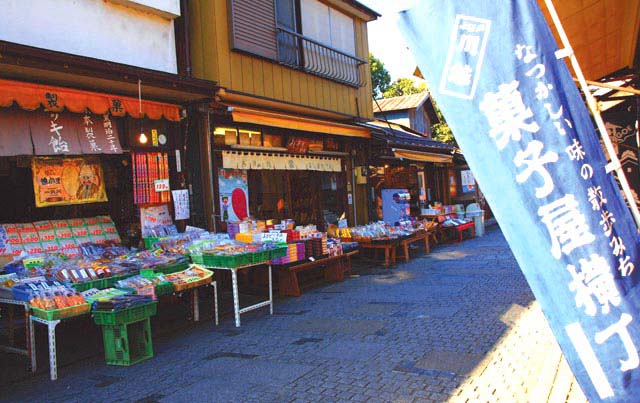
This is a famous shopping district in Kawagoe that is lined with more than 20 traditional Japanese candy stores along a stone-paved road plastered with colorful glass chips. In this alley, you will find many candy stores carrying on the traditions of ancient confectioners, with their old-fashioned Japanese candies and cookies such as Hakka (mint) and Nikki (cinnamon) candies. You can even enjoy the savory smells of soy sauce as vendors make Dango (rice dumplings) and Senbei (rice crackers.) In 2001, this alley was selected as one of Japan’s “100 Scenic Scents” by the Ministry of the Environment.
Kitain Temple
This is the renowned temple of Tendaishu, established by mentor Jikakudaishi in 830 A.D. and known to possess many historic cultural properties. It was relocated from Edo Castle by Tokugawa Iemitsu, the third shogun of the Tokugawa dynasty, and Kasuganotsubone. There are many such cultural properties relocated from Edo Castle, including “Kyakuden,” the birthplace of Tokugawa Iemitsu, decorated with luxurious murals and “sumi-e” ink art, as well as “Shoin,” the dressing and make-up room for Kasuganotsubone , the wet nurse of Tokugawa Iemitsu.
Nakain Temple
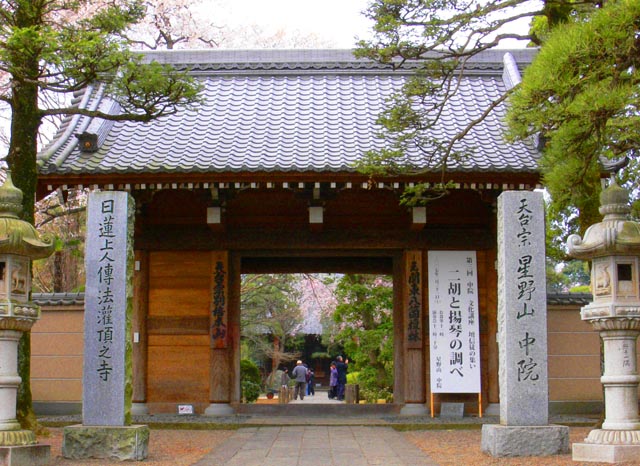
A Tendaishu temple located just south of Kitain with a long history, starting at the end of the Kamakura Period. This used to be the main temple of this area until a bishop named Tenkai Soujou came to Kitain Temple to live. It is known for the historical background of author Shimazaki Touson, and for “Fusentei,” a registered cultural treasure of Kawagoe, located on the temple grounds. It is also known for the magnificent cherry blossoms that bloom on the weeping cherry tree, the best-known of their trees. Another noteworthy item is that it is the birthplace of Kawagoe Tea and Sayama Tea.
Toshogu Shrine
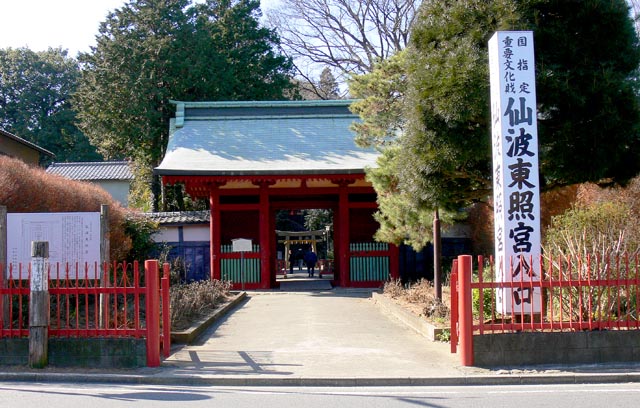
Nikko Toshogu Shrine is most famous for honoring Tokugawa Ieyasu, but there are numerous Toshogu Shrines throughout Japan. The Toshogu found in Kawagoe is one of the three major Toshogu Shrines in Japan called the “Senba Toshogu,” located just south of Kitain. In 1616, Tokugawa Ieyasu died in Sunpu, located in present-day Shizuoka Prefecture, and his remains were carried from Shizuoka to Nikko Mountain. Along the way, a Buddhist memorial service was conducted by Tenkai Soujou at Kitain Temple over four days. With this backdrop, the Toshogu Shrine was established in Kawagoe in 1633.
Hommaru Goten (Hommaru Palace)
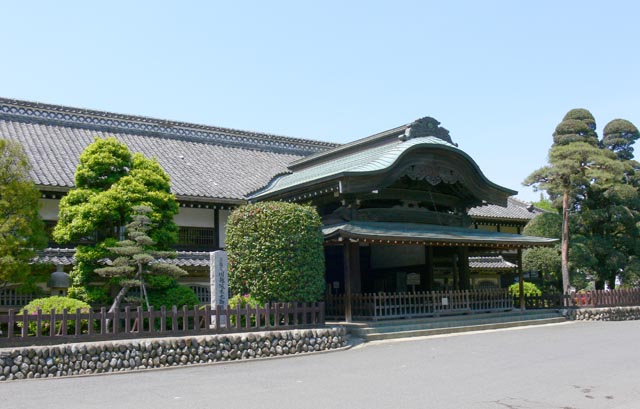
Kawagoe Castle was originally constructed by Ohta Doshin and his son, Dokan, by a command from Uesugi Mochitomo in order to compete with his opponent, Ashikaga Shigeuji. The remaining Hommaru Goten of Kawagoe Castle was rebuilt by Matsudaira Naritsune, a local lord of Kawagoe domain at the time, and is characterized by its sedate samurai-house architecture and is the only remaining part of Kawagoe Castle which once flourished with 1.7 million koku in Edo Period. (“koku” is a unit of measurement of wealth for subdivisions called “han”.) After the Meiji Restoration, the castle was gradually demolished and what remains today are the entrance hall, the main hall and the chief retainer room, which was relocated and rebuilt.
2-13-1 Kuruwa-machi Kawagoe City Saitama Prefecture
Tel:049-224-6015
Hours: 9:00 – 17:00 ( Admission until 16:00 )
Admission: Adults 100 yen, Students (senior high school, university) 50 yen, Children under junior high school Free
Holidays: Every Monday (excluding Mondays that follow a holiday or the Kawagoe festival), days following holidays (excluding Saturdays and Sundays), 4th Friday of the month (excluding holidays), Dec 28 – Jan 4
Hikawa Jinja (Hikawa Shrine)
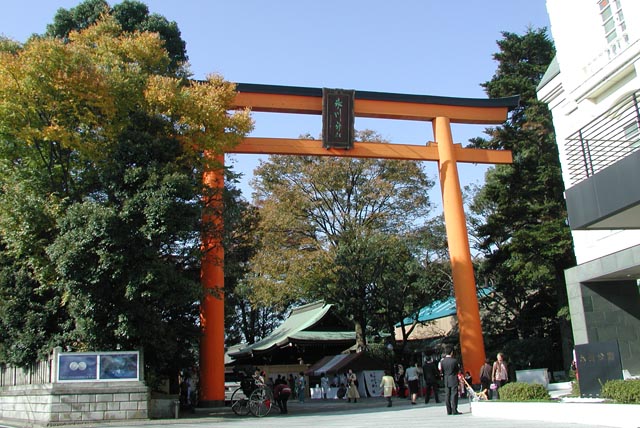
This Shinto shrine has a tall torii gate built in the Myojin-style, 15-meters high, with the grounds filled with a number of trees over 500 years old and the sacred Keyaki trees rustling in the wind. The history of Kawagoe Hikawa Shrine is very long, going back to the 6th Century, when it was separated from the Omiya Hikawa Shrine. The Main Shrine and other historical buildings that carry on the Edo culture were registered as a designated cultural property of Saitama Prefecture. The famous Dashi (Float) Parade of the Kawagoe Hikawa Festival is a subordinate event of the annual festival.
Hie Jinja (Hie Shrine)
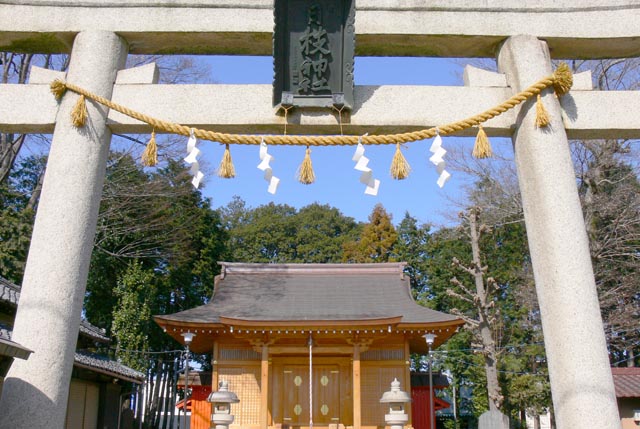
This is a small Shinto shrine, located diagonally in front of the gate of Kitain. Hie Sanno Shrine in Akasaka, known as the original “Akasaka Sanno” of the “Tenka Matsuri (Festival),” was separately enshrined from the shrine built by Ohta Dokan. It is said that the main shrine is historically constructed, built partly in the old architectural style, established in the Kanei Era (1624 to 1643) or, even before that, at the end of the Muromachi Era and has been registered as and important cultural property.
Gohyaku Rakan (500 Arhats)

This is a group of stone Buddhist images numbering 538, with various facial expressions and very popular among tourists. The humorous images are in dramatic contrast with the solemn atmosphere of the old historic temple. It is said that as you walk by them, you can find sometimes find warm ones, as if they have body temperature.




